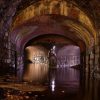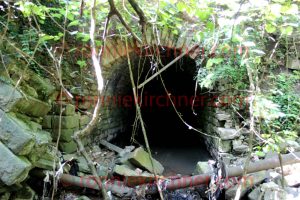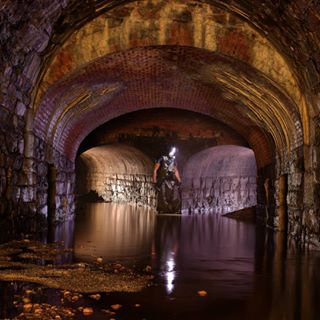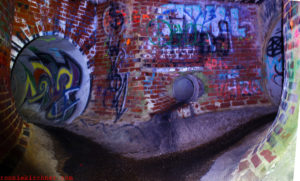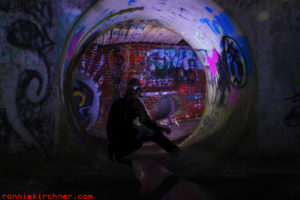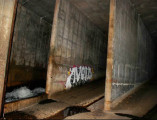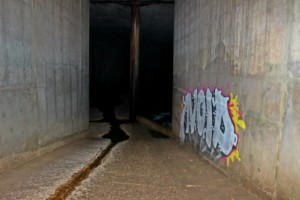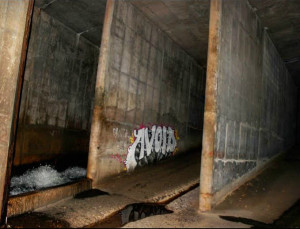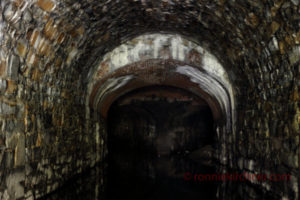
Drains McMechen respectively, including Mosher and John. Was relieved by Druid Hill/ North Avenue Intercepter. It varies in size from an arched culvert 12 feet wide and 15 feet high to a circle 4 feet 6 inches in diameter. Drains out the Rutters Run Lateral. An old, forgotten, buried yet ever present stream. Extensive system with 2 significant junction chambers. Its tunnel system drains out an area known to be notorious for small streams,springs and quicksand. The same engineering grief was had during the construction of the B&O railroad tunnel that lies just north of this tunnel. Exploration of these tunnels requires a man raft as it is block by a deep pit of water of unknown depth. It was once thought that a man raft would be required to access this system but later explorations proved otherwise. However, it has come to our understanding that old drains suffer from deep silt deposits and stagnant air making their penetration and documentation quite treacherous.

Exploration & Discovery Abstract
This tunnel lies within the zone of Baltimore’s “Forgotten Triangle”. For years this tunnel was missed, as it is tucked away in thick brush and mangled railroad waste and appears irrelevant to the untrained eye on satellite imagery. However, one day, the explorer took note of a small, slow flowing stream (almost stagnant in some places) that was tucked away in the corner of the Forgotten triangle. It was decided to follow this stream, with little hopes that it would turn up anything more then a small stone storm drain. The terrain leading up to the drain is treacherous. Mangled, metal and trash strewn everywhere making the explorer cognizant of every step he takes. There is evidence of old foundations and structures and a reconstructed railroad utility. bridge After about a 10 minute traverse, you don’t see the tunnel until your right on top of it due to tree branches and snake like vines covering its entrance. At this point, its like your down in a hole. The side embankments are about 15-20ft above your head but the stone granite arch tunnel itself is like bored into a 40 foot high embankment.
